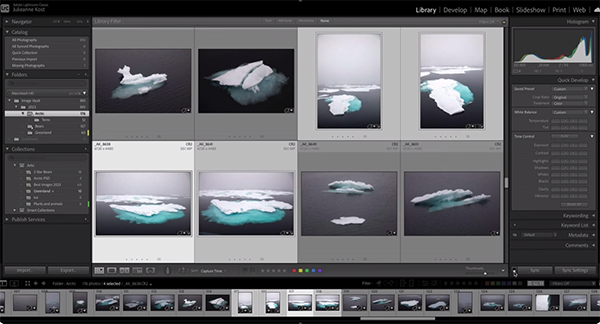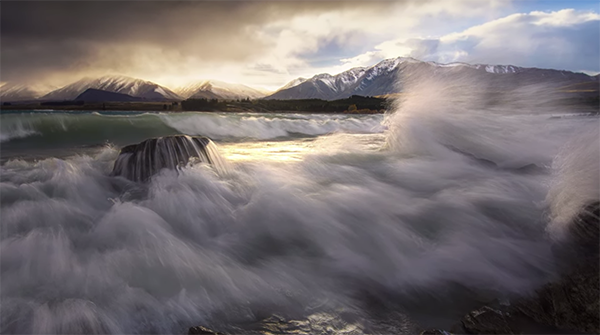Disco pumpkins are the latest trend taking over social media – how to get the look in time for Halloween
Release your inner disco diva this Halloween
Last week brought you a short-and-sweet tutorial from post-processing impresario Julieanne Kost, explaining the simple process of using Photo Merge in Lightroom to create beautiful HDR images that would be impossible to capture in a single shot in the camera. Today she’s back with another five-minute episode, demonstrating how to speed up the editing process by using the Quick Develop panel in Lightroom Classic.
The experts at Adobe describe the versatile tool like this: “The Quick Develop panel in Lightroom’s Library module gives you the convenience of quickly applying color and tone adjustments to one or more photos without leaving the Library module.”
It’s important to remember that any Quick Develop settings you make are recorded in the History panel of the Develop module, and corresponding slider controls adjust accordingly in the Basic panel. The emphasis of today’s episode is all about how editing with the Quick Develop module provides a big boost to your post-process productivity.

Kost double-clicks on her image to provide a larger view, and then she uses the Disclosure Triangles in order to reveal various options in Quick Develop. There are more possibilities that those you see at first glance. That’s because when you use the keyboard shortcuts she provides, Clarity switches to Sharpening, and Vibrance become Saturation.
You can use icons to quickly decrease or increase the values for each of the options. In her example she increases exposure by one stop, while decreasing Highlights and Blacks. It’s also possible to apply presets, modify crop ratio, and change the treatment from color to b&w.
Best yet, if you don’t like what you see, it’s super easy to reset the file and return to the original image because “all of the change we make are nondestructive.” Kost goes back to Lightroom’s Grid view and this time she selects four images instead of just one. Then by enabling Auto Sync, the adjustments you make will be quickly applied to all of the selected files— great way to accelerate the process.

Kost demonstrates several other Quick Develop tricks, like selecting Auto under Tone Control so that Lightroom “will intelligently analyze each one of these images and then make an automatic correction” on your behalf. Once that happens the images in the film strip at the bottom of the workspace are immediately updated so that you know exactly where you stand.
After watching the remainder of the video and seeing Kost demonstrate other helpful tips, be sure to visit her popular YouTube channel where you’ll find more great advice for elevating your post-processing skills.
And don’t forget to check out the tutorial mentioned above so that you understand the simple process of using Photo Merge in Lightroom to achieve perfectly balanced tones when combinig multiple versions of the same scene.
Conventional wide-angle lenses are usually the weapons of choice when shooting landscape photos and other expansive vistas. The more specialized ultrawide options are less well understood and require a different approach for optimum results.
This tutorial from William Patino demonstrates how to take advantage of your fancy glass to capture spectacular outdoor imagery. Patino is a professional landscape photographer based in beautiful Fiordland, New Zealand and he’s a very passionate instructor. He considers an ultra-wide lens his go-to workhorse when shooting in the field, and he demonstrates why in barely seven minutes.
What we’re talking about here are lenses with a focal length of 12-24mm, 16-35mm, 14-24mm and others that are wider than those in the more common 28mm or 35mm range. As he says, “these lenses are meant to be used in a very specific way, and in this video I’ll provide some tips for using an ultra-wide, how you can get the most out of it, and really give your images a three-dimensional look.”

Patino says that when photographers mount an ultra-wide lens on a camera for the very first time they tend to be “overwhelmed” by the view and can be unsure how to lead a viewer’s eye to their main subject because there’s so many other elements in the frame. He provides several tricks for solving the confusion and dealing with the so-called “pin-cushion” effect that often occurs in the centralized portion of a shot.
You’ll also learn how to leverage the “diminishing perspective” of ultra-wide optics to exaggerate the effect they provide to capture images with an attention-grabbing 3D look. The power of this trick has to do with how large shapes get progressively smaller and roll into the distance the further away they are from the camera position.
In this regard, ultra-wide lenses enable you to get really close to interesting foreground objects and still fit in a compelling midground and background, while “stretching out all those details.” At this point you’re only halfway through the video, and Patino has much more knowledge to impart.

Bottom line: If you’re going to invest in a premium ultra-wide lens, you should put Patino’s advice to work so that you can take advantage of everything these remarkable lenses can do. Patino’s instructional YouTube channel is full of lessons for anyone who shoots in the field, so be sure to pay a visit when you have time to explore.
And don’t miss the tutorial we featured recently with another accomplished pro who demonstrates how to create depth and dimension in landscape photographs with four “must-know” shooting and post-processing tips.
